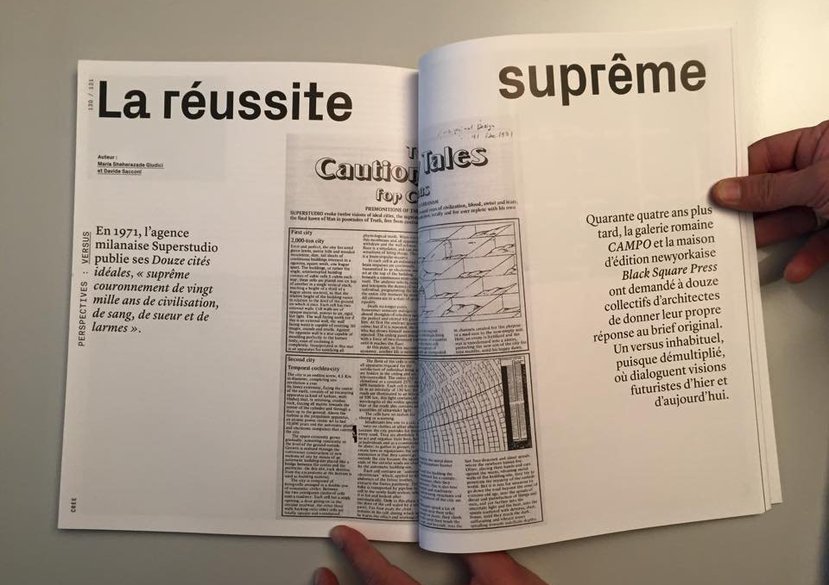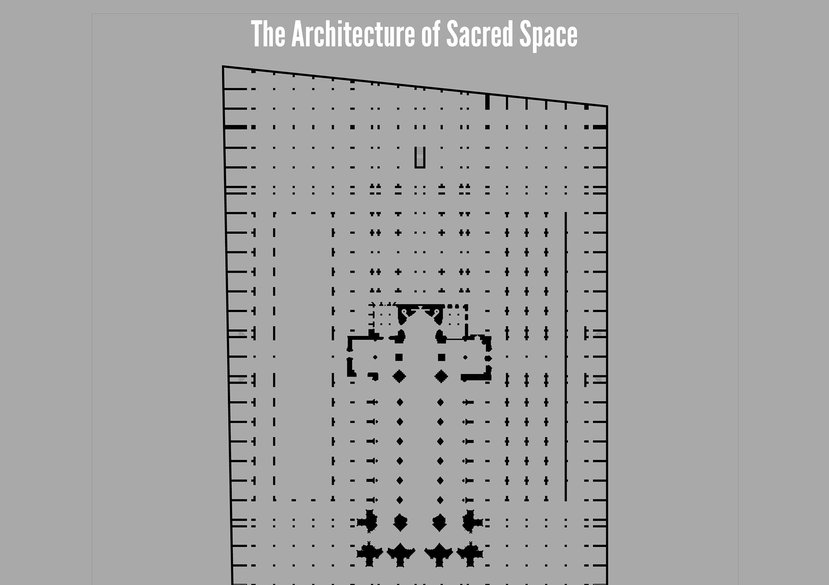
Dr Maria Shéhérazade Giudici
Maria's research focuses on the construction of modern subjectivity. Maria is the founder of publishing and educational platform Black Square.
Maria earned her PhD from Delft University in 2014; her thesis The Street as a Project: The Space of the City and the Construction of the Modern Subject is a critique of the contemporary idea of public space and an attempt to rethink the ‘void between the buildings’ as the object of political and architectural intentions. Between 2005 and 2011 Maria collaborated with offices BAU Bucharest, Donis, and Dogma, specialising in large-scale urban developments and mass housing projects. In 2011 Maria joined Pier Vittorio Aureli as Studio Master of Diploma Unit 14 at the Architectural Association. Maria is also the founder of publishing and educational platform Black Square.
Key details
School, Centre or Area
Gallery
More information
Research interests
Between 2010 and 2014, Maria worked mostly on the urban scale, which was the key topic of her PhD thesis The Street as a Project: The Space of the City and the Construction of the Modern Subject, as well as being the main issue she dealt with in her postgraduate research conducted as a teacher in Barcelona and Rotterdam. At this scale, Giudici studied the way in which public space and infrastructure has been strategised in the modern European city as a way to construct the ideal citizen of a mature nation-state. The ‘space between buildings’, the void that makes the city a shared domain, has been therefore her main object of inquiry for the first part of her academic career together with a broader investigation of what she terms the Natural City, or the post-political city. In the last few years, this same interest towards the project of subjectivity has shifted on the scale of architecture proper, first with research on the architecture of sacred spaces (Rituals and Walls, co-edited with P. V. Aureli and published in 2016 by AA Press) and later with Giudici’s current interest in housing.
Maria is currently writing and lecturing on the Home Front as the place where reproductive labour is choreographed and, at the same time, hidden by the rhetoric of domesticity. As such, her recent work has been mainly concentrated on issues of gender and typological development. Maria considers the three scales as intimately interconnected and while the latest developments can be formulated as a feminist critique of architecture, she see this critique as part of a broader investigation into the relationship between architecture and its political instrumentality in constructing specific forms of life.
Practice
Maria's research focuses on the construction of modern subjectivity; her current work is centred on the relationship between housing types and the politics of reproductive labour. She contributes to ADS 1 with a series of seminars on the historical development of housing as a social project.
Current and recent projects
(2016) Rituals and Walls, London: AA Publications, co-edited with Pier Vittorio Aureli
The idea of sacred space has not been considered a relevant topic in recent architecture, a neglect even more pronounced in terms of debates about the city. The texts and projects in this book aim to redress this oversight, and re-open a contemporary understanding of its relevance. The book itself is the result of a year-long investigation developed in the AA’s Diploma Unit 14. It consists of design proposals that range from a multi-faith school in Strasbourg to a women’s Islamic centre in Paris. Each proposal is introduced by critical texts that analyse the political and ideological meaning of religious architecture. The book is complemented by essays that focus on the relationship between forms of worship and architecture, and argue that the meaning of sacred space goes far beyond the stereotypes of contemplation and spirituality, and instead align with the political and social ethos of the city.
(2016) The Supreme Achievement, Milan: Black Square, co-edited with Davide Sacconi
In 1971, Superstudio published their twelve Ideal Cities, 'the supreme achievement of twenty thousand years of civilization, blood, sweat and tears'. After 44 years, we asked twelve groups of architects to give their own answer to the original brief. The Superstudio piece was less about imagining the Future than it was about re-imagining Architecture as a form of knowledge and as a platform for thinking rather than mere practice. The format itself – one image and one text for each of the twelve cities –implies a project of an Archetype rather than a pragmatic solution to a problem. In fact, these visions of ‘supreme achievement’ are not answers, but open questions. While Superstudio's response was intentionally dystopian, there might be other ways to interpret today the same brief. We still need architecture to put forward not only ideas for new forms of life, but also new possibilities for our political imagination to go beyond the current conventional models.
(2015) ‘La Réussite Suprême’, with Davide Sacconi, in Architectures CREE, 374
In this essay the editors of The Supreme Achievement reflect on the result of the collective work of the 12 practices invited to respond to Superstudio’s Ideal Cities. The very idea of an ‘ideal city’ entails the development of perfect and dystopian urban mechanisms where any incoherence is eliminated; the projects, the authors argue, challenge the idea that space and bodily presence might not matter anymore in the future, while at the same time they provide an ironic commentary on the architect’s curse: that we have to be projective and optimistic by default, even (or maybe especially) when civilization seems in fact to have come to an end.
(2015) ‘John Soane: From Theatre of Memory to Framework for Memories’, in Perspecta, 48
The essay reads two works by John Soane as instances of the transition between the tradition of the Wunderkammer and modern museum space.
In Soane’s own residence at Lincoln’s Inn Fields (1794-1824) architecture itself becomes a sort of mnemonic device, constructing the 19th century version of a 'Theater of Memory'. On the other hand, the Dulwich Picture Gallery (1817) is the first project for a public art gallery in the United Kingdom, offering Soane an occasion to rethink the way to store, display and make accessible art to a wider audience. While Lincoln’s Inn Fields addresses the theme of memory through symbolism, the Dulwich Gallery simply offers a background, a frame for the staging – and, eventually, consumption – of art. In this shift, the subject of architecture’s memory theatre became the bourgeoisie, and, in time, consumers at large. Ultimately, the essay investigates the way in which architecture contributed to inventing the modern idea of memory as saleable quantity, economic asset, and most desirable product of our contemporary society.
(2013) ‘Specific Spaces: Government and the Emergence of architecture d’accompagnement, 1584–1765’, in Pier Vittorio Aureli (ed), The City as a Project, Berlin: Ruby Press
The essay charts the emergence of architecture d’accompagnement, the stylized classicism which became the koine of the French city from the XVII century onwards. Through an analysis of Pierre Le Muet’s Maniere de Bastir and its social and cultural context, we attempt to uncover the instrumentality of the accompagnement’s aesthetics: a simplified lingua franca geared towards the construction of an abstract environment able to respond and embody the secular qualities of a modern nation state.
(2013) ‘Education, Consumption, Reproduction: Three Cautionary Tales’, in Ana Jeinic, Anselm Wagner (eds), Is There (anti)Neoliberal Architecture? Berlin: Jovis
The essay discusses three key aspects of the neoliberal city through projects developed in a yearlong research at the Berlage Institute. The research is understood as a response to paradigmatic proposals put forward in a decade when the first effects of post-Fordist production were starting to be visible in the European city. By critiquing Cedric Price’s Potteries Thinkbelt (1966), Archizoom’s No-Stop City (1969), and Superstudio’s 12 Ideal Cities (1971), the essay sheds light on the changed role of education, consumption and reproduction. Universities that are factories (and vice versa), shopping malls that are 24/7 places to live and work, and agglomerations of living units without social life or political interaction are clearly the main ingredients of our post-Fordist city, turning the parables of the 1960s into effective portrayals of nothing less than our everyday reality. It is the aim of this reappraisal of these early criticisms of the post-Fordist society to demonstrate that the political value of architecture can be that of offering a heuristic device: a disenchanted glance on the future of the material world, able to forecast new categories, warn against hidden dangers, and shape new desires and ambitions.
External collaborations
- 120 Hours Oslo (2016)
- The Architectural Association (2011–present)
- Barcelona Institute of Architecture (2010–12)
- Betts Project (2014–present)
- British Council (2016 Venice Biennale, British Pavilion)
- CAMPO Rome (2015–present)
- DOGMA (2011–present)
- Gehry Technologies (2013)
- Kulttuurisauna Helsinki (2015–present)
- Oliaros (2010–11)
- REAL (2015–present)



